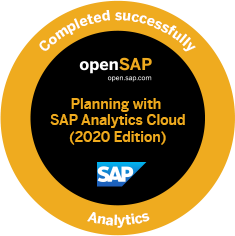- Core data services (CDS) is an infrastructure that can be used by database developers to create the underlying (persistent) data model, which the application services expose to UI clients. With CDS, you define a persistence model that includes objects such as tables, views, and structured types. The database objects specify what data to make available for applications and how that data is made available.
- Consumption Views: Consumption views are public domain-specific views for analytics, search, and transactional applications.
The consumption views can also be consumed via oData services on the SAP Gateway. The oData services allow SAP Fiori, SAP BW tools, and third-party UI and clients to access the consumption views directly or via the analytical engine. - Interface Views: Interface views are public, stable, and reusable views for any consumer.
- Private Views: Private views are auxiliary technical helper views. They are not part of the public interface
- Customer-Defined Extensions: Customer-defined extensions to SAP-provided objects are possible.
- The SAP CoPilot is a digital assistant that allows you to accomplish tasks quickly in your business applications.
- SAP S/4HANA Enterprise Management - SAP S/4HANA Enterprise Management represents the core solution, covering all mission-critical processes of an enterprise. It represents the foundational core solution, natively built on the SAP HANA platform and designed with SAP Fiori UX.For customers who are coming from an existing SAP applications background, Enterprise Management can be loosely compared to SAP ERP. However, SAP S/4HANA is a completely new set of applications. Although there are many similarities to SAP ERP, many of the processes are redesigned, so there is often not a simple one-to-one comparison with traditional transactions.
- SAP S/4HANA Line of Business - SAP S/4HANA Line of Business (LoB) solutions provide much broader and deeper functionality to support organizations in strategic areas, where they want to fully exploit innovative digital applications. LoB solutions can be on premise or in the cloud. The key point is that you extend the core by adding LoB solutions. The overall solution is extended seamlessly. When LoB solutions are added, the business users have the same SAP Fiori-based user experience as before, with the same SAP HANA-based high performance.
- Management Accounting (Controlling) - Management Accounting (Controlling) enables the valuation and recording of financial data, not only for financial reporting, but also as the basis for all cost and revenue-related reporting. As a result, analysts and managers can work with the same basic data as the company’s financial accountants. Because financial data is tightly integrated with the business processes of the logistic processes of SAP S/4HANA and human resources applications, users can also easily obtain detailed information about cost structures and profit margins.
- The SAP Fiori Launchpad is a shell that hosts SAP Fiori apps and provides services, such as navigation, personalization, embedded support, and application configuration. It is the entry point to SAP Fiori apps on mobile and desktop devices. The launchpad displays a home page with tiles, which can display live status indicators, such as the number of open tasks. Each tile represents a business application that the user can launch.
- Product types (Treasury)- The product type classifies a financial instrument in SAP Treasury and Risk Management. Differentiation is necessary as the individual instruments are subject to different processing rules and/or to create different levels for reporting. Examples of product types are intercompany loans, FX spot trades, FX forward trade, etc.
- Transaction types (Treasury) - Transaction types are defined with respect to a product type and sub-divide the product types by type of transaction. For example, the transaction types for a product type representing a bond may be BUY and SEL.
- Flow types (Treasury) - Flow types define the flows of a trade. For example, an FX forward contract has a buy currency side (buy flow type) and a sell currency side (sell flow type).
- Condition types (Treasury) - Condition types control how flows calculated by the system are handled, such as interest, dividends, repayments, and charges.
- Update types (Treasury) - The update type identifies the flow in position management and controls the flow to the operative and parallel valuation areas. Each update type has a direction associated with it.
S/4 HANA Finance : Terminologies and Glossaries
- Details
- Category: SAP S/4 HANA Articles

